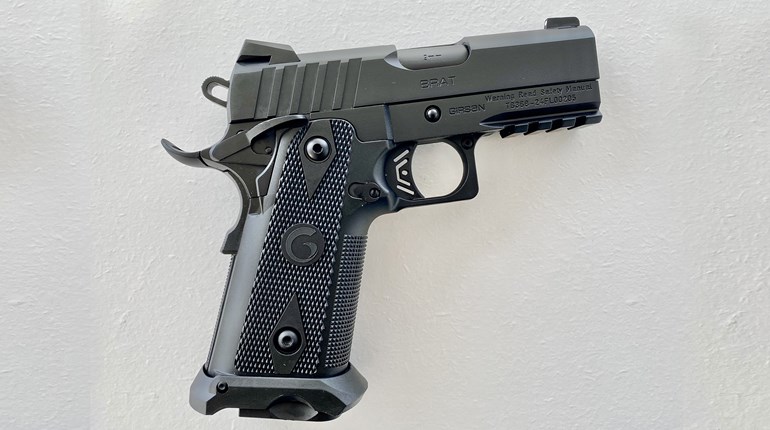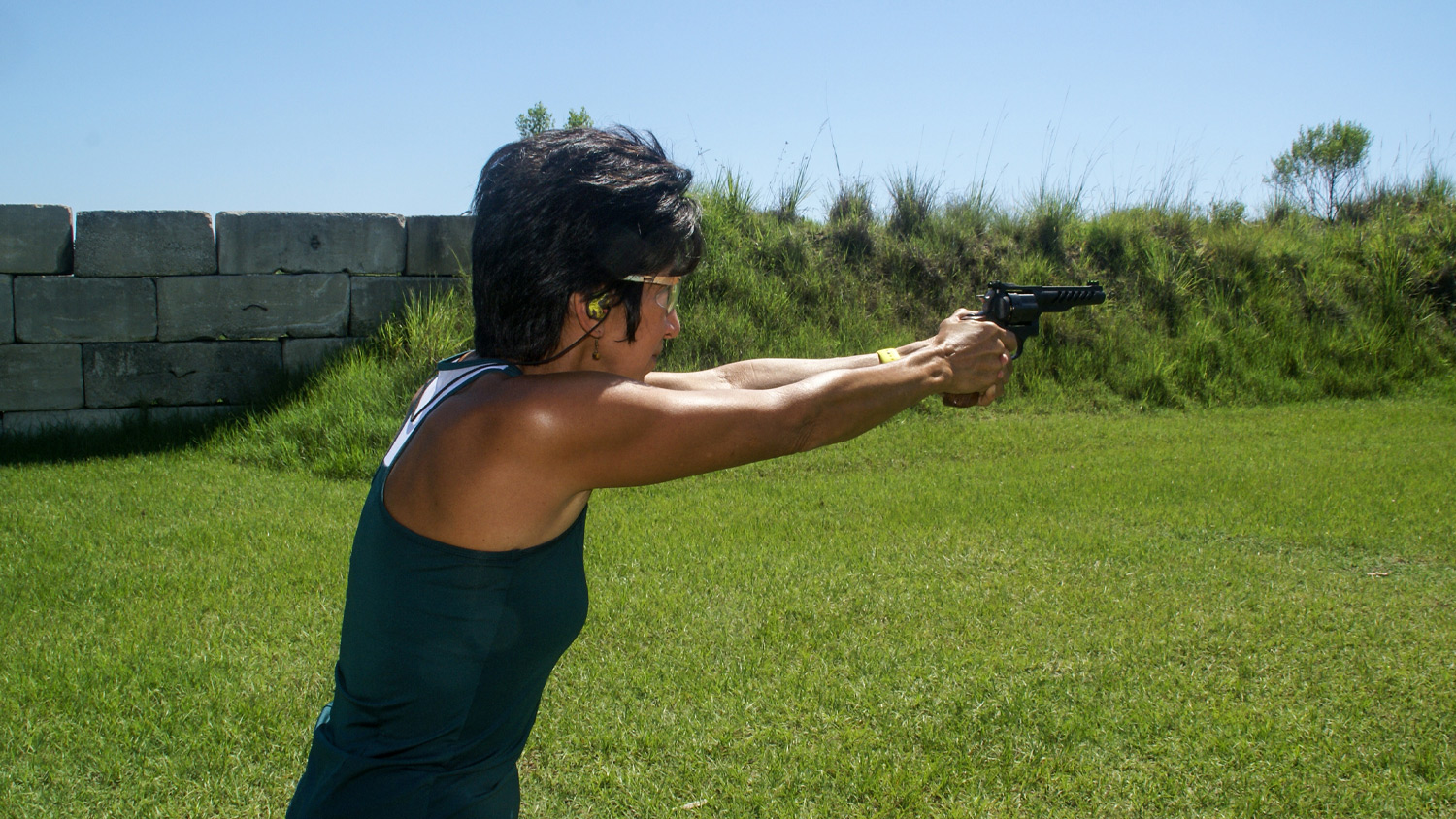
Firing the revolver involves slightly different processes, depending upon whether a double- or single-action gun is used. (Read our beginner's guide on loading a revolver.)
Firing Double-Action Revolvers
Almost all modern double-action revolvers can be fired in either of two modes: the double-action mode or the single-action mode.
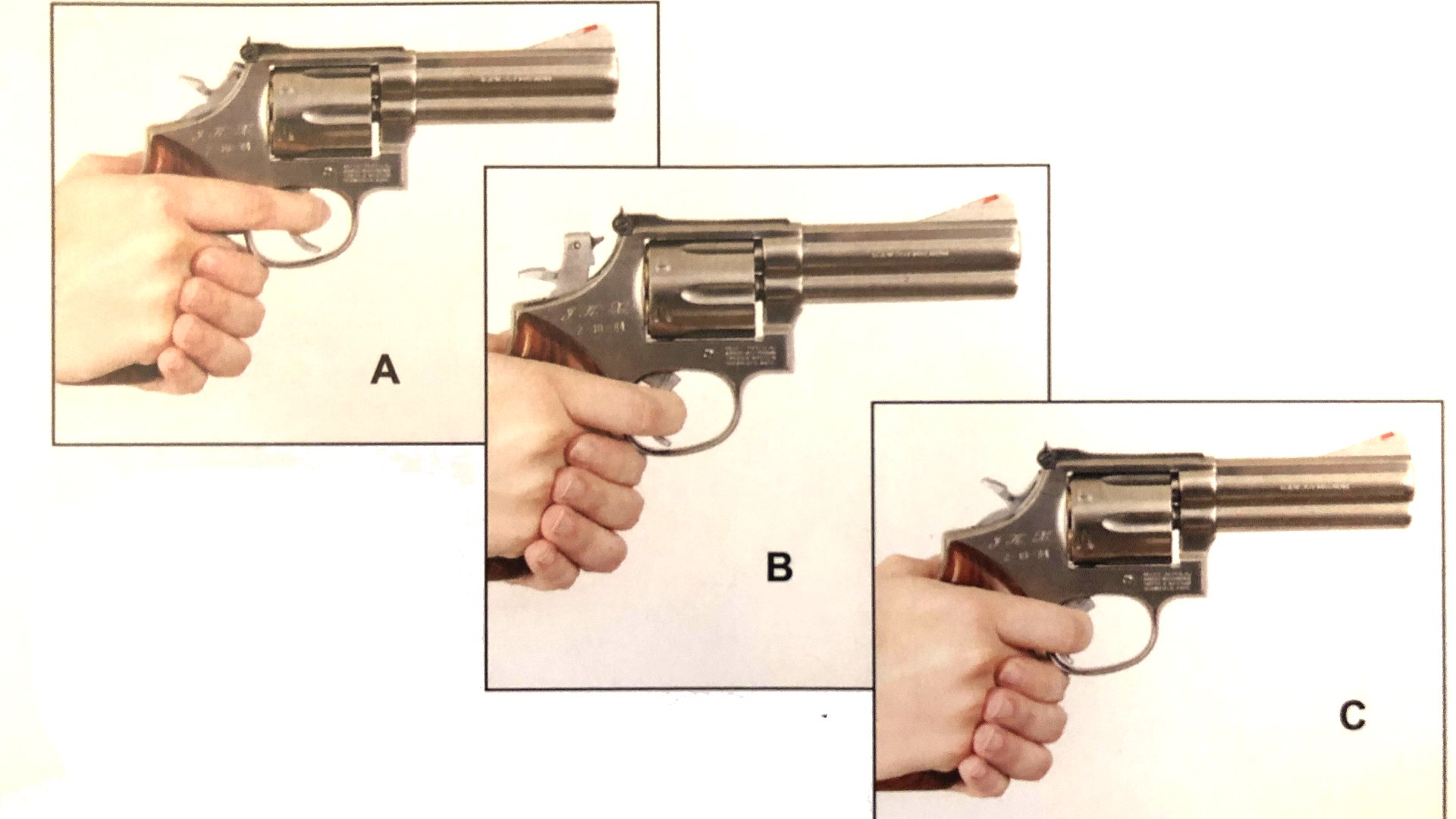
In the double-action mode, the revolver is fired simply by pulling the trigger through its long double-action arc when it is pointed at the target. This action advances the cylinder, and both cocks the hammer and releases it when fully cocked, firing the cartridge. Pulling the trigger again advances the cylinder to the next chamber and cocks and releases the hammer, firing another cartridge. This procedure is repeated until the desired number of shots is fired, or all the cartridges are spent.
Most double-action revolvers can also be fired in the single-action mode. In this mode, with the gun pointed in a safe direction, the hammer is first cocked (either with the thumb of the firing hand in a one-hand shooting grip, or by the thumb of the support or non-firing hand, if a two-hand grip is employed). Cocking the hammer advances the cylinder to the next chamber. The revolver is then fired by simply pulling the trigger. To fire another shot, the hammer is again manually cocked, which advances the cylinder to the next chamber. This process cocking and firing may be repeated until the desired number of shots is fired, or until all the cartridges in the cylinder are spent.
The shooter will notice a distinct difference in trigger pull quality and weight in those two modes. In the double-action mode, the trigger pull is long and relatively heavy—usually around eight to 15 pounds. In the single-action mode, in contrast, the trigger releases after a very short pull, usually at a light weight of only two or three pounds.
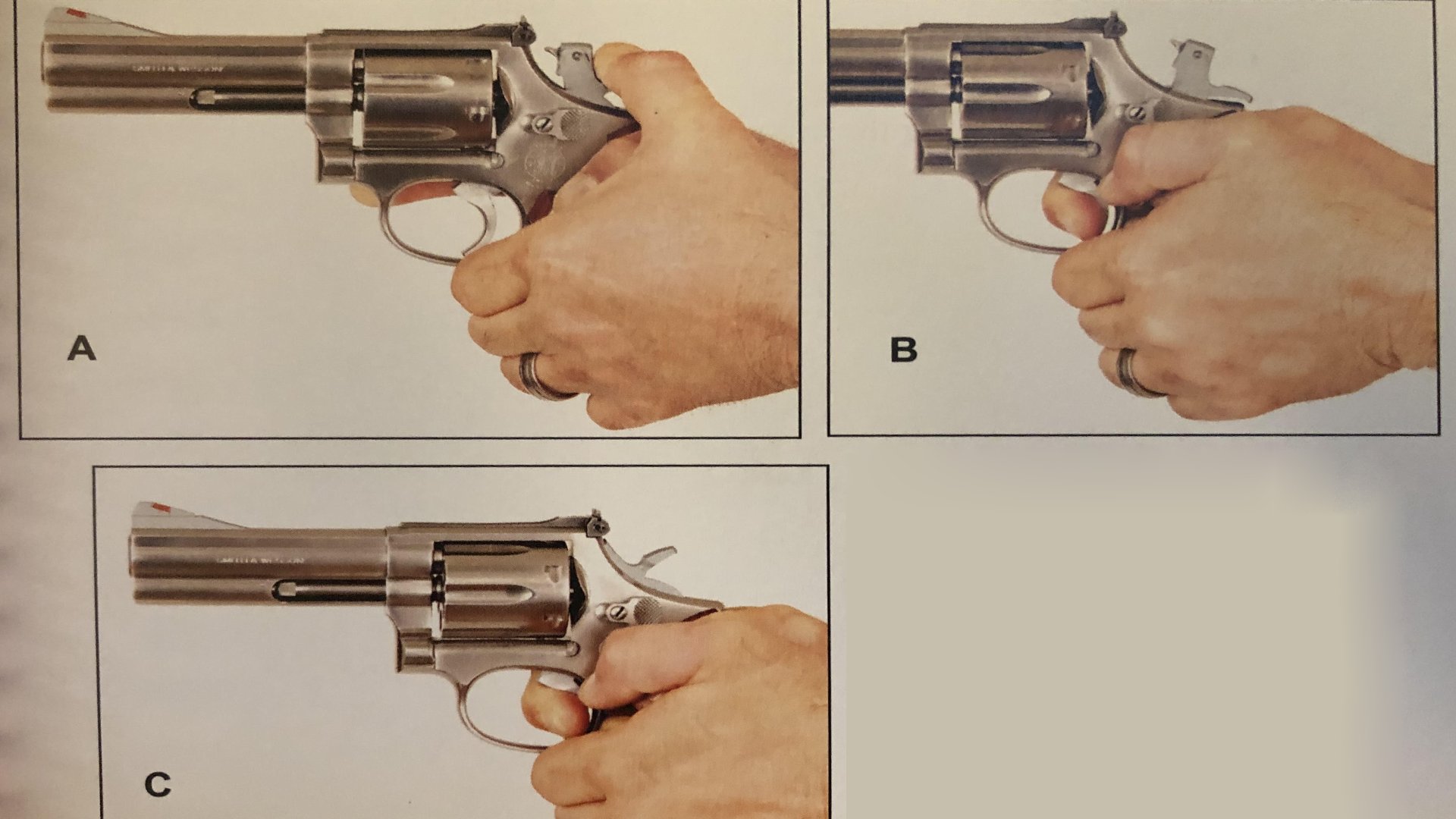
It is also worth nothing that some double-action revolvers are designed to work only in the double-action mode. This is accomplished by such design features as shrouds or frames that enclose the hammer, hammers that lack a spur, or the elimination of the internal contact surfaces on the trigger or hammer that produce the single-action pull.
In both the double-action and single-action modes, the shooter must avoid grasping the revolver in such a way that puts the non-firing hand near the barrel/cylinder gap. Hot, high-pressure gas escaping through this gap could injure a finger carelessly placed close to it.
Firing Single-Action Revolvers
The process for firing single-action revolvers is identical to that for firing double-action revolvers in the single-action mode. With the revolver pointed in a safe direction, the hammer is first cocked (either with the thumb of the firing hand in a one-hand shooting grip, or by the thumb of the support or non-firing hand, if a two-hand grip is employed). Cocking the hammer advances the cylinder to the next chamber. The revolver is then fired by pulling the trigger. To fire another shot, the hammer must again be manually cocked, which once more advances the cylinder to the next chamber. This process of cocking and firing may be repeated until the desired number of shots is discharged, or the cartridges are all fired.
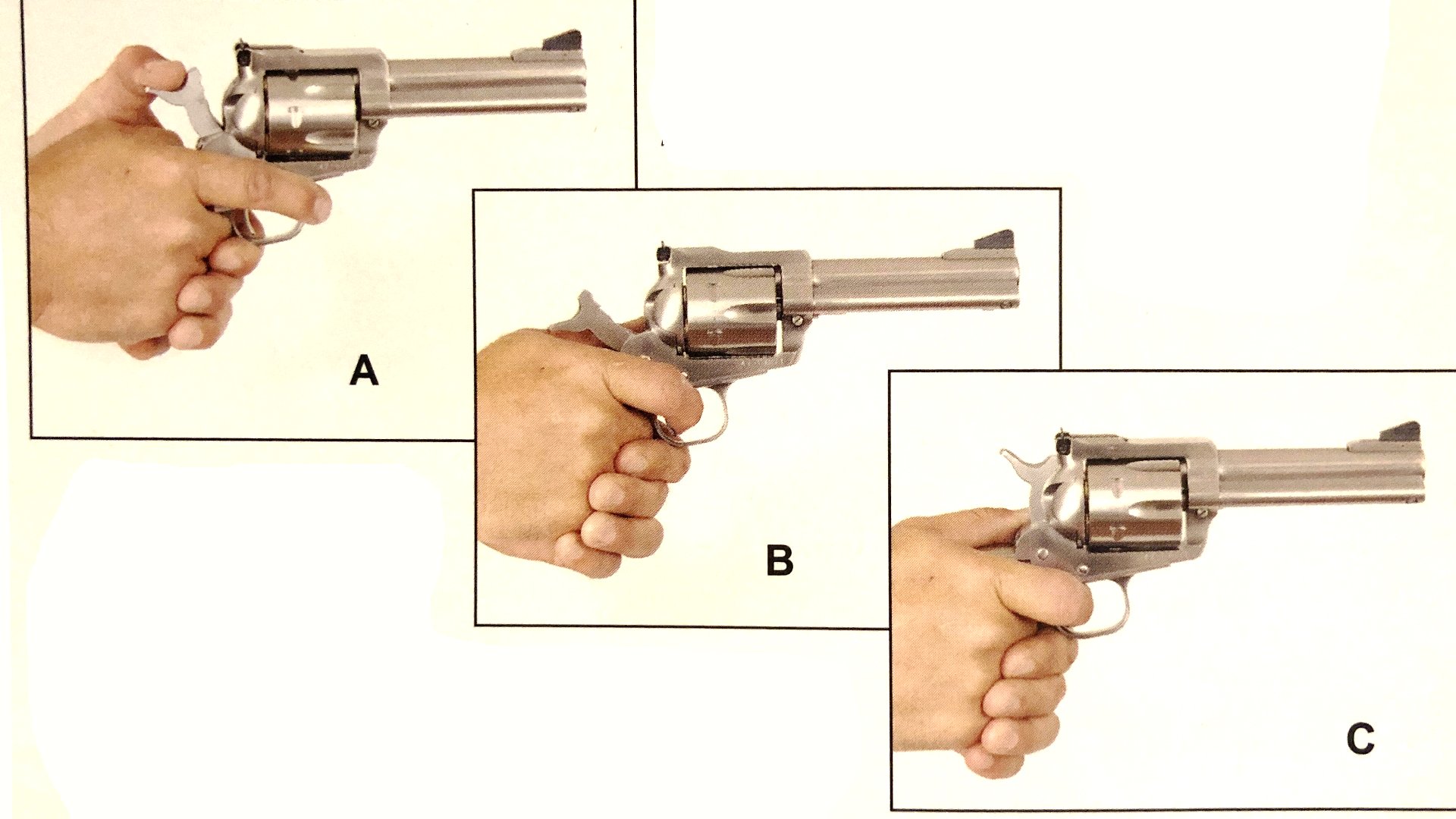
As with the double-action revolver, the single-action revolver shooter must keep the non-firing hand away from the barrel/cylinder gap, to avoid injury from the hot, high-pressure gas that escapes through it.
Read more: NRA 150th Anniversary Book Available Now















